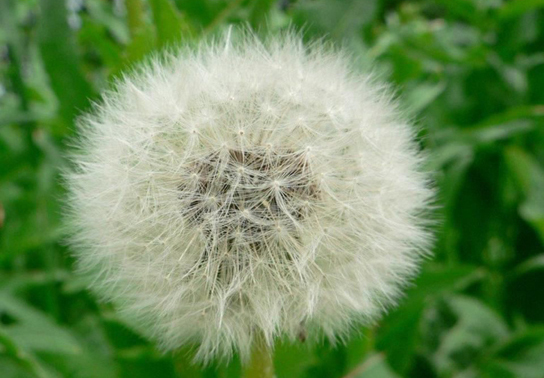| << Chapter < Page | Chapter >> Page > |

Fruits generally have three parts: the exocarp (the outermost skin or covering), the mesocarp (middle part of the fruit), and the endocarp (the inner part of the fruit). Together, all three are known as the pericarp . The mesocarp is usually the fleshy, edible part of the fruit; however, in some fruits, such as the almond, the endocarp is the edible part. In many fruits, two or all three of the layers are fused, and are indistinguishable at maturity. Fruits can be dry or fleshy. Furthermore, fruits can be divided into dehiscent or indehiscent types. Dehiscent fruits, such as peas, readily release their seeds, while indehiscent fruits, like peaches, rely on decay to release their seeds.
The fruit has a single purpose: seed dispersal. Seeds contained within fruits need to be dispersed far from the mother plant, so they may find favorable and less competitive conditions in which to germinate and grow.
Some fruit have built-in mechanisms so they can disperse by themselves, whereas others require the help of agents like wind, water, and animals ( [link] ). Modifications in seed structure, composition, and size help in dispersal. Wind-dispersed fruit are lightweight and may have wing-like appendages that allow them to be carried by the wind. Some have a parachute-like structure to keep them afloat. Some fruits—for example, the dandelion—have hairy, weightless structures that are suited to dispersal by wind.
Seeds dispersed by water are contained in light and buoyant fruit, giving them the ability to float. Coconuts are well known for their ability to float on water to reach land where they can germinate. Similarly, willow and silver birches produce lightweight fruit that can float on water.
Animals and birds eat fruits, and the seeds that are not digested are excreted in their droppings some distance away. Some animals, like squirrels, bury seed-containing fruits for later use; if the squirrel does not find its stash of fruit, and if conditions are favorable, the seeds germinate. Some fruits, like the cocklebur, have hooks or sticky structures that stick to an animal's coat and are then transported to another place. Humans also play a big role in dispersing seeds when they carry fruits to new places and throw away the inedible part that contains the seeds.
All of the above mechanisms allow for seeds to be dispersed through space, much like an animal’s offspring can move to a new location. Seed dormancy, which was described earlier, allows plants to disperse their progeny through time: something animals cannot do. Dormant seeds can wait months, years, or even decades for the proper conditions for germination and propagation of the species.



For fertilization to occur in angiosperms, pollen has to be transferred to the stigma of a flower: a process known as pollination. Gymnosperm pollination involves the transfer of pollen from a male cone to a female cone. When the pollen of the flower is transferred to the stigma of the same flower, it is called self-pollination. Cross-pollination occurs when pollen is transferred from one flower to another flower on the same plant, or another plant. Cross-pollination requires pollinating agents such as water, wind, or animals, and increases genetic diversity. After the pollen lands on the stigma, the tube cell gives rise to the pollen tube, through which the generative nucleus migrates. The pollen tube gains entry through the micropyle on the ovule sac. The generative cell divides to form two sperm cells: one fuses with the egg to form the diploid zygote, and the other fuses with the polar nuclei to form the endosperm, which is triploid in nature. This is known as double fertilization. After fertilization, the zygote divides to form the embryo and the fertilized ovule forms the seed. The walls of the ovary form the fruit in which the seeds develop. The seed, when mature, will germinate under favorable conditions and give rise to the diploid sporophyte.
[link] What is the function of the cotyledon?
[link] B

Notification Switch
Would you like to follow the 'Biology' conversation and receive update notifications?